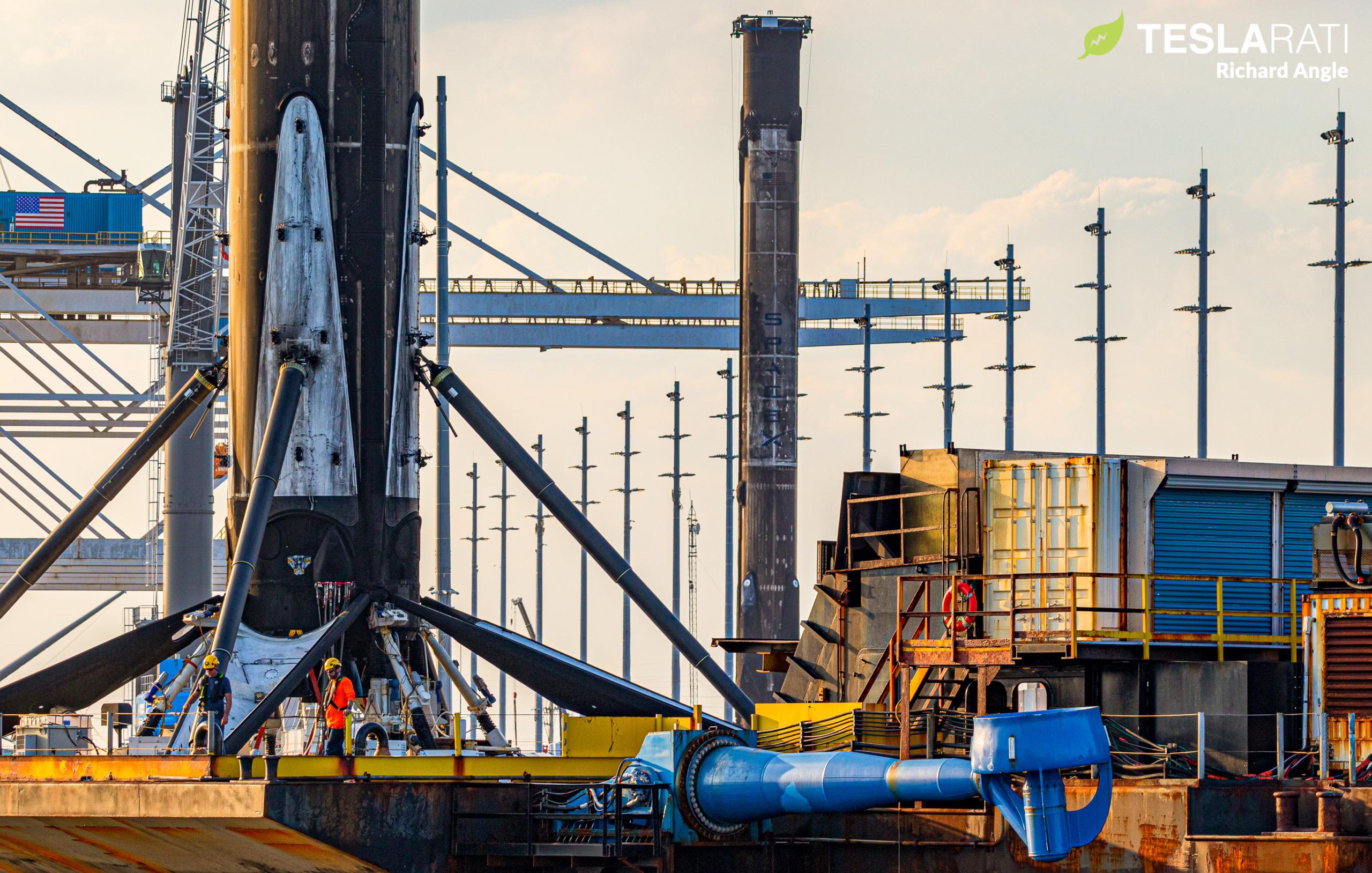
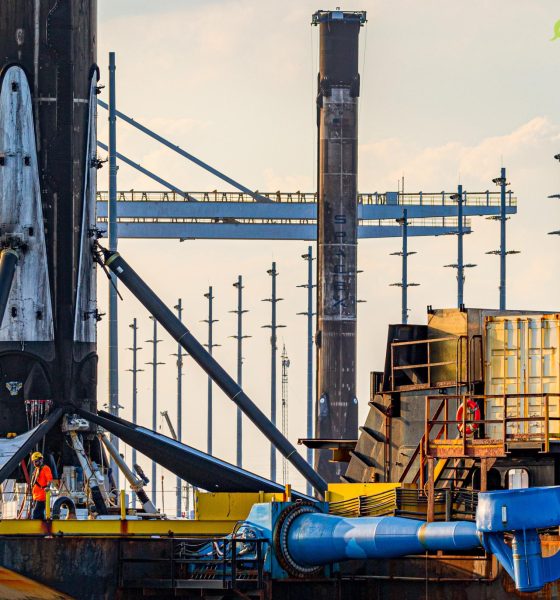
News
SpaceX rocket boosters line up in port for the first time after back-to-back launches
For the first time ever, two SpaceX Falcon 9 boosters – fresh off of two successful Starlink launches and landings – have met back at Port Canaveral, creating the first rocket ‘traffic jam’ of its kind.
On March 11th, Falcon 9 booster B1058 stuck its sixth launch and landing after supporting SpaceX’s sixth dedicated Starlink launch (Starlink-20) this year. 74 hours later, a separate Falcon 9 rocket lifted off from SpaceX’s second East Coast launch pad, successfully sending another batch of 60 Starlink satellites (Starlink-21) on their way to orbit. For its role in the mission, booster B1051 became the first Falcon first stage to launch and land nine times – just one shy of a ten-flight rocket reusability goal SpaceX has been chasing for years.
Now, aside from setting the new standard for Falcon reusability, placing 120 satellites into orbit in three days, and breaking SpaceX’s record for the shortest turnaround between two East Coast launches, the back-to-back Starlink launches have left both Falcon 9 boosters in the right place and right time to cross paths as they prepare for future flights.
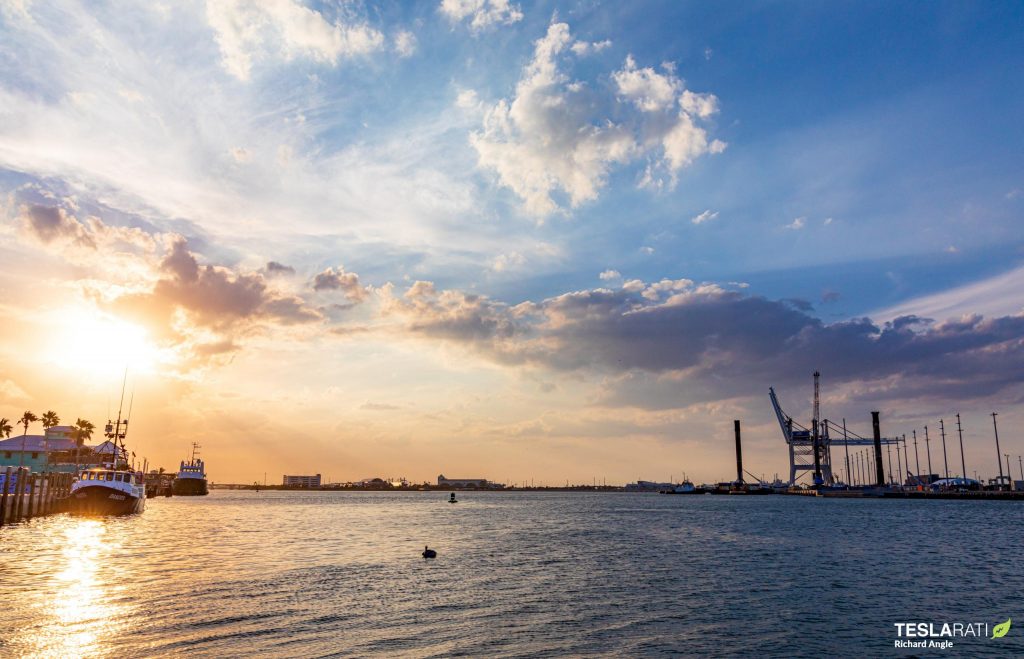
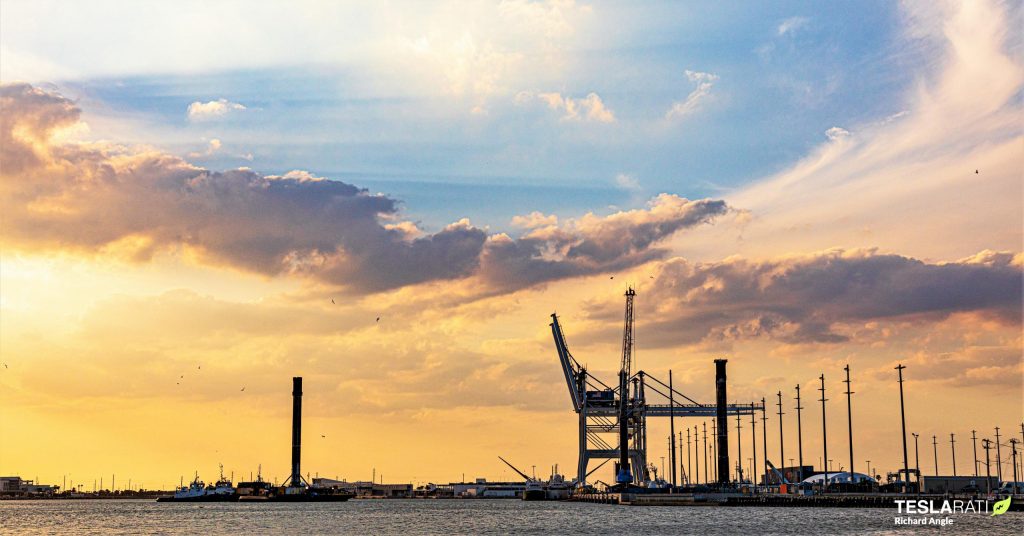
As SpaceX began to ramp up its orbital launch cadence – largely thanks to Starlink – throughout 2020, it become clear that the company would eventually start to find new pressure points as it pushed its fleet of reusable rockets and their recovery assets to new limits. In 2021, that intentional exertion of stress across the broader SpaceX launch ‘pipeline’ has become even clearer.
A mere 10 weeks into 2021, SpaceX has already completed eight orbital launches, averaging one mission every nine days or 40 launches per year if extrapolated through the end of 2021. Just two days prior to Falcon 9 booster B1058’s arrival back at Port Canaveral after its successful Starlink-20 launch, Falcon 9 booster B1049 – last tasked with launching Starlink-17 on March 4th – wrapped up its port processing and was transported by road back to Cape Canaveral Air Force Station (CCAFS) or Kennedy Space Center (KSC) to prepare for its ninth flight.
At that point, it became clear it was just a matter of time before two boosters would simultaneously occupy SpaceX’s Port Canaveral berths. Two days later, record-breaking Falcon 9 booster B1051 arrived back in port and was greeted by booster B1058 – legs retracted, standing vertical, and waiting to be ‘broken over’ (brought horizontal) for transport.
It’s hard to imagine a better or (pardon the buzzword) more synergistic pair of boosters to appear in port together. On their separate launch debuts, Falcon 9 B1051 supported Crew Dragon’s spectacularly flawless uncrewed launch debut, while Falcon 9 B1058 became the first private rocket in history to launch US astronauts 14 months later. Known as Demo-1 and Demo-2, those two missions collectively mark arguably the most significant milestone in the history of modern US spaceflight, ending a decade-long period where the US was unable to launch its own astronauts.
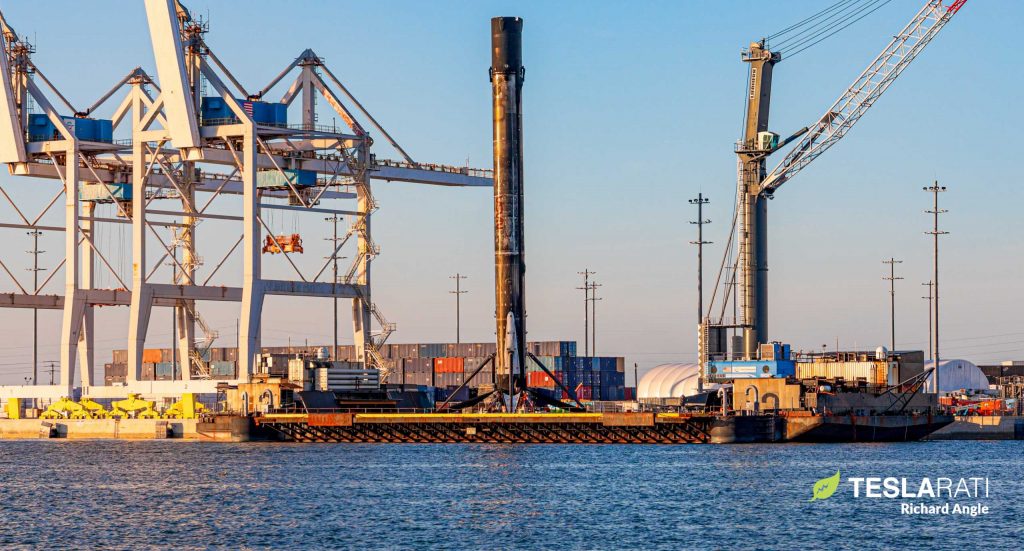
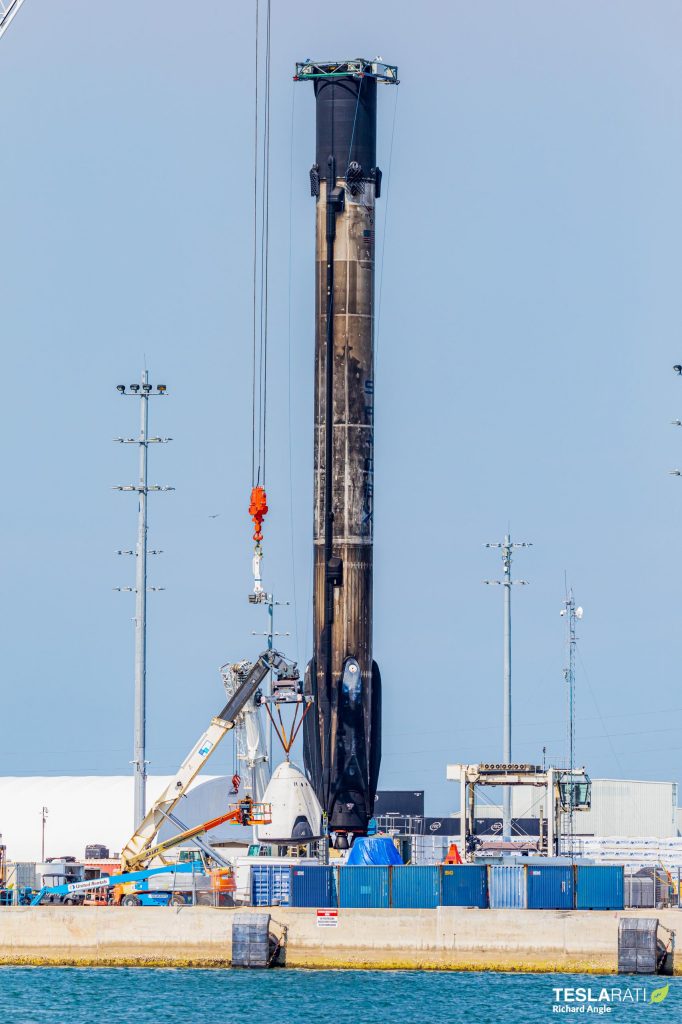
Just a week after the rocket’s 2019 Demo-1 launch debut, Falcon 9 B1051 is SpaceX’s new booster fleet ‘life leader’ (the most-flown rocket) after averaging one launch ever 11 weeks for the last two years. Aside from supporting Cargo Dragon 2’s launch debut last December, Falcon 9 B1058 has flown six times, averaging an even more impressive one launch every eight weeks. Together, the two boosters have aced 15 orbital-class launches roughly 190 metric tons of satellites and Dragon spacecraft into orbit in their two-year career, significantly more than the maximum payload of Saturn V – the largest rocket to successfully launch.
Falcon 9 B1051 could reportedly fly for the tenth time as early as April 2021.
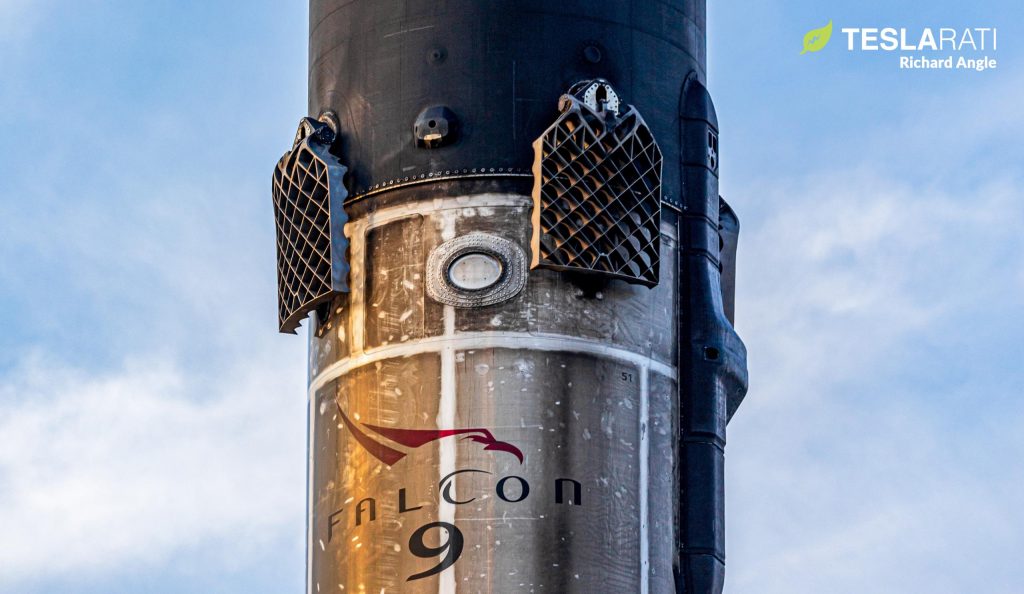
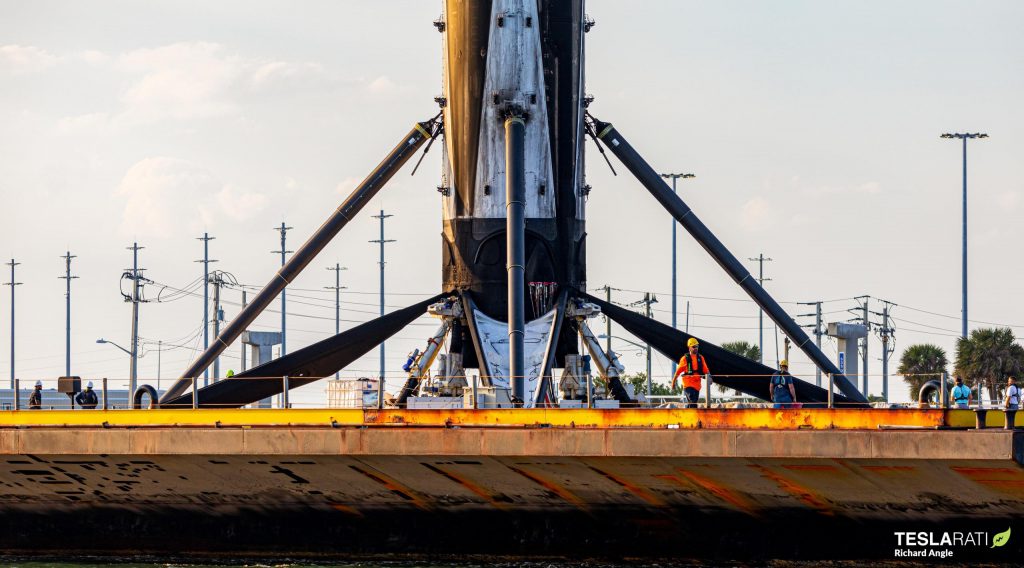
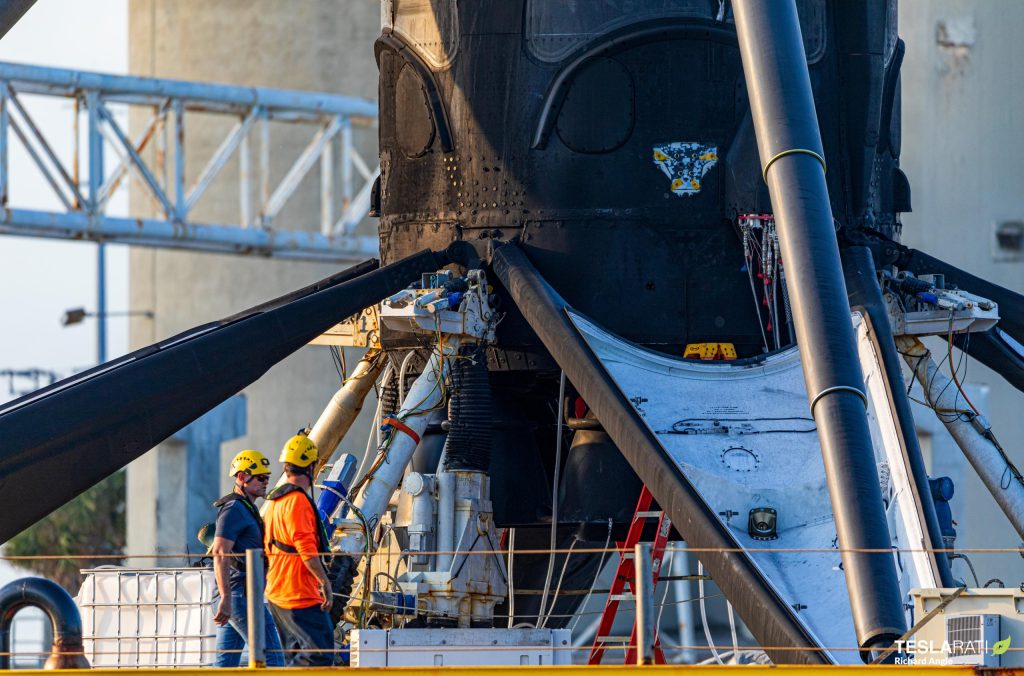
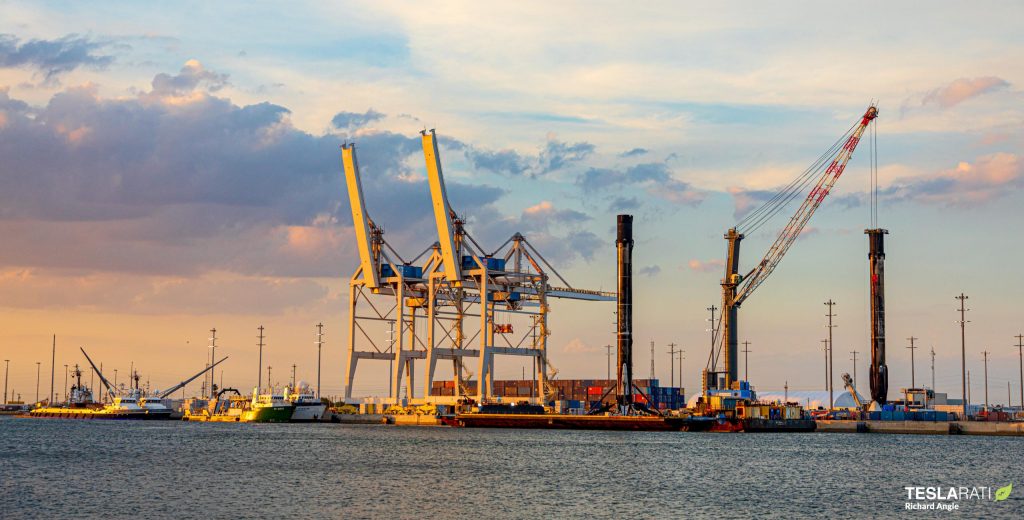
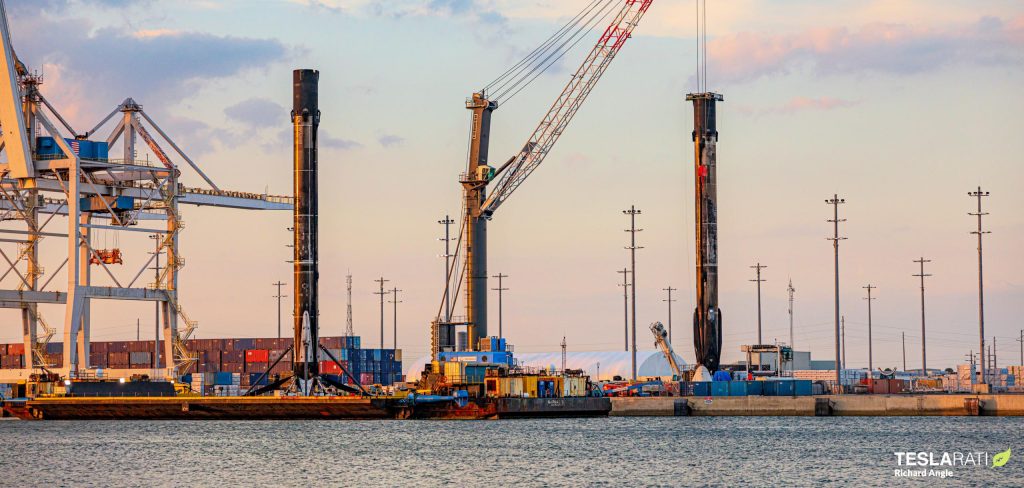

News
Tesla Full Self-Driving (FSD) testing gains major ground in Spain
Based on information posted by the Dirección General de Tráfico (DGT), it appears that Tesla is already busy testing FSD in the country.
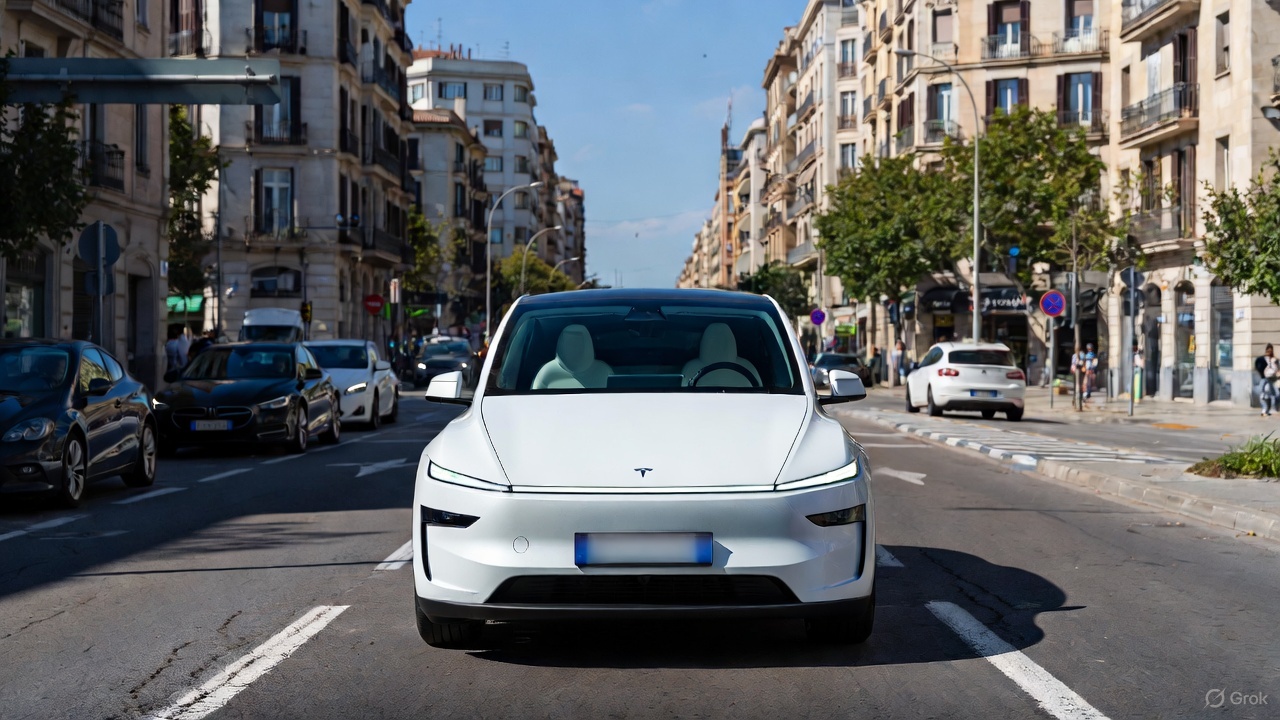
Tesla’s Full Self-Driving (Supervised) program is accelerating across Europe, with Spain emerging as a key testing hub under the country’s new ES-AV framework program.
Based on information posted by the Dirección General de Tráfico (DGT), it appears that Tesla is already busy testing FSD in the country.
Spain’s ES-AV framework
Spain’s DGT launched the ES-AV Program in July 2025 to standardize testing for automated vehicles from prototypes to pre-homologation stages. The DGT described the purpose of the program on its official website.
“The program is designed to complement and enhance oversight, regulation, research, and transparency efforts, as well as to support innovation and advancements in automotive technology and industry. This framework also aims to capitalize on the opportunity to position Spain as a pioneer and leader in automated vehicle technology, seeking to provide solutions that help overcome or alleviate certain shortcomings or negative externalities of the current transportation system,” the DGT wrote.
The program identifies three testing phases based on technological maturity and the scope of a company’s operations. Each phase has a set of minimum eligibility requirements, and applicants must indicate which phase they wish to participate in, at least based on their specific technological development.
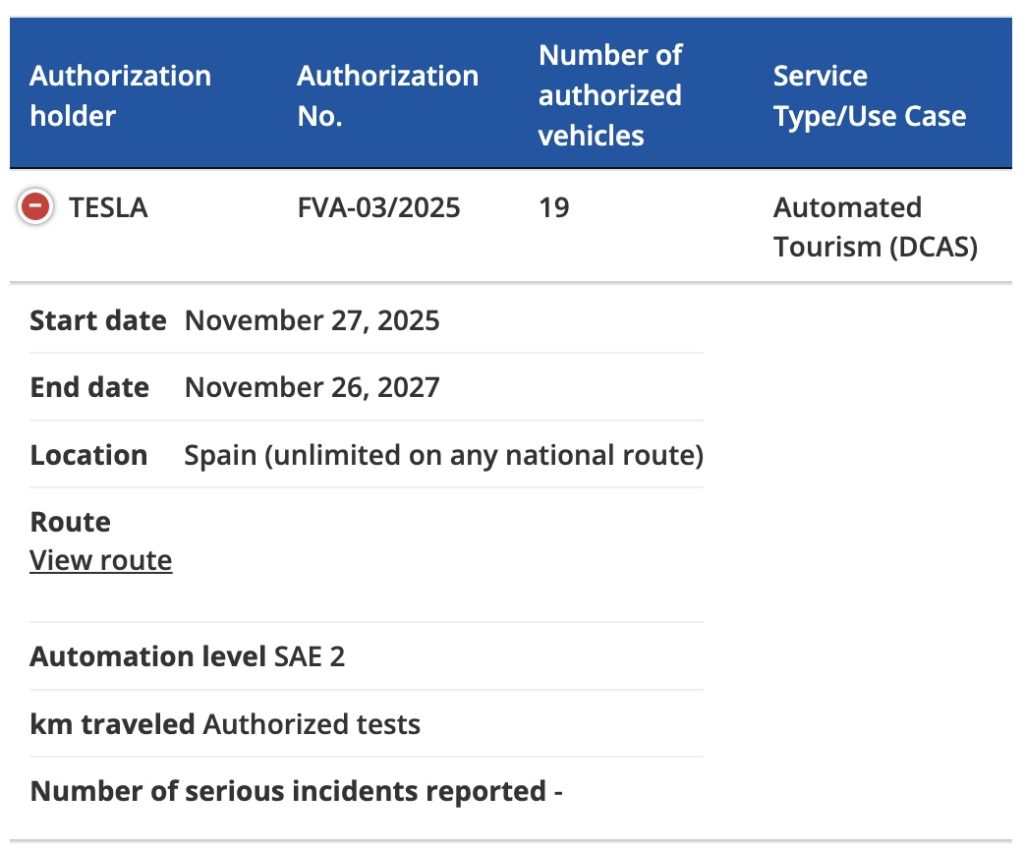
Tesla FSD tests
As noted by Tesla watcher Kees Roelandschap on X, the DGT’s new framework effectively gives the green flight for nationwide FSD testing. So far, Tesla Spain has a total of 19 vehicles authorized to test FSD on the country’s roads, though it would not be surprising if this fleet grows in the coming months.
The start date for the program is listed at November 27, 2025 to November 26, 2027. The DGT also noted that unlimited FSD tests could be done across Spain on any national route. And since Tesla is already in Phase 3 of the ES-AV Program, onboard safety operators are optional. Remote monitoring would also be allowed.
Tesla’s FSD tests in Spain could help the company gain a lot of real-world data on the country’s roads. Considering the scope of tests that are allowed for the electric vehicle maker, it seems like Spain would be one of the European countries that would be friendly to FSD’s operations. So far, Tesla’s FSD push in Europe is notable, with the company holding FSD demonstrations in Germany, France, and Italy. Tesla is also pushing for national approval in the Netherlands in early 2026.
News
Tesla FSD V14.2.1 is earning rave reviews from users in diverse conditions
Tesla’s Full Self-Driving (Supervised) software continues its rapid evolution, with the latest V14.2.1 update drawing widespread praise.
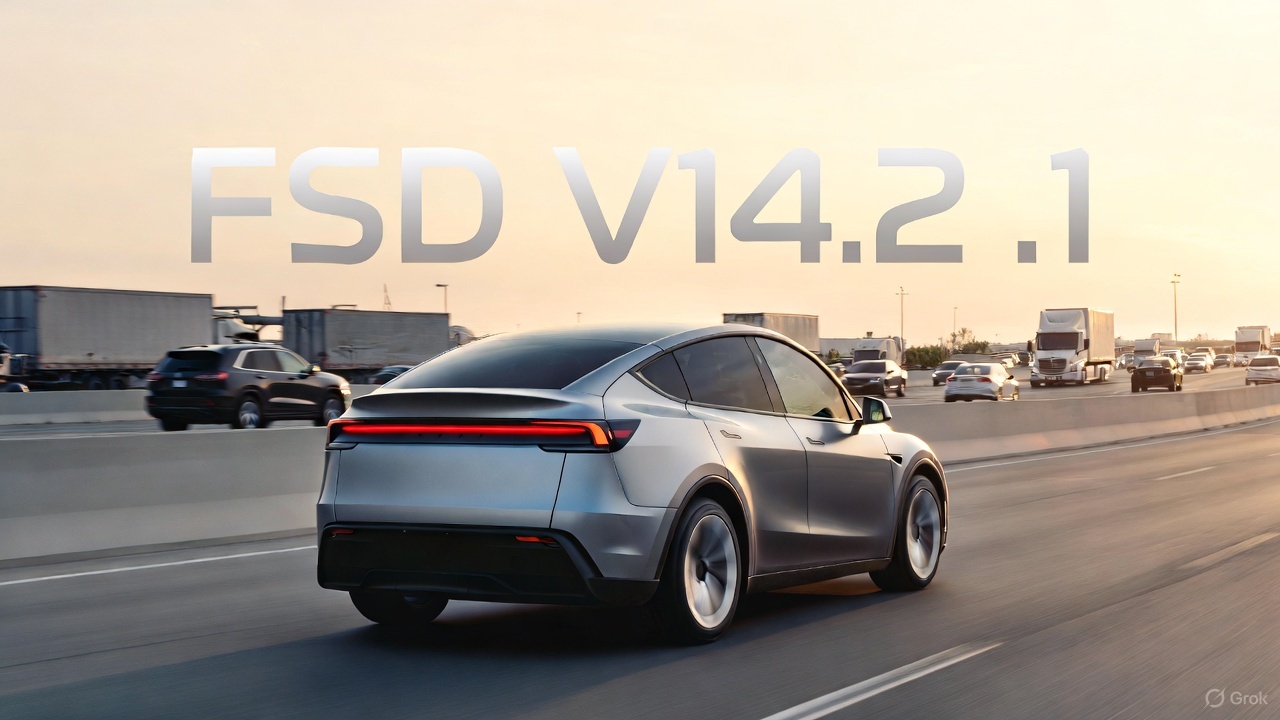
Tesla’s Full Self-Driving (Supervised) software continues its rapid evolution, with the latest V14.2.1 update drawing widespread praise for its smoother performance and smarter decision-making.
Videos and firsthand accounts from Tesla owners highlight V14.2.1 as an update that improves navigation responsiveness, sign recognition, and overall fluidity, among other things. Some drivers have even described it as “more alive than ever,” hinting at the system eventually feeling “sentient,” as Elon Musk has predicted.
FSD V14.2.1 first impressions
Early adopters are buzzing about how V14.2.1 feels less intrusive while staying vigilant. In a post shared on X, Tesla owner @LactoseLunatic described the update as a “huge leap forward,” adding that the system remains “incredibly assertive but still safe.”
Another Tesla driver, Devin Olsenn, who logged ~600 km on V14.2.1, reported no safety disengagements, with the car feeling “more alive than ever.” The Tesla owner noted that his wife now defaults to using FSD V14, as the system is already very smooth and refined.
Adverse weather and regulatory zones are testing grounds where V14.2.1 shines, at least according to testers in snow areas. Tesla watcher Sawyer Merritt shared a video of his first snowy drive on unplowed rural roads in New Hampshire, where FSD did great and erred on the side of caution. As per Merritt, FSD V14.2.1 was “extra cautious” but it performed well overall.
Sign recognition and freeway prowess
Sign recognition also seemed to show improvements with FSD V14.2.1. Longtime FSD tester Chuck Cook highlighted a clip from his upcoming first-impressions video, showcasing improved school zone behavior. “I think it read the signs better,” he observed, though in standard mode, it didn’t fully drop to 15 mph within the short timeframe. This nuance points to V14.2.1’s growing awareness of temporal rules, a step toward fewer false positives in dynamic environments.
FSD V14.2.1 also seems to excel in high-stress highway scenarios. Fellow FSD tester @BLKMDL3 posted a video of FSD V14.2.1 managing a multi-lane freeway closure due to a police chase-related accident. “Perfectly handles all lanes of the freeway merging into one,” the Tesla owner noted in his post on X.
FSD V14.2.1 was released on Thanksgiving, much to the pleasant surprise of Tesla owners. The update’s release notes are almost identical to the system’s previous iteration, save for one line item read, “Camera visibility can lead to increased attention monitoring sensitivity.”
News
Tesla FSD Supervised ride-alongs in Europe begin in Italy, France, and Germany
The program allows the public to hop in as a non-driving observer to witness FSD navigate urban streets firsthand.

Tesla has kicked off passenger ride-alongs for Full Self-Driving (Supervised) in Italy, France and Germany. The program allows the public to hop in as a non-driving observer to witness FSD navigate urban streets firsthand.
The program, detailed on Tesla’s event pages, arrives ahead of a potential early 2026 Dutch regulatory approval that could unlock a potential EU-wide rollout for FSD.
Hands-Off Demos
Tesla’s ride-along invites participants to “ride along in the passenger seat to experience how it handles real-world traffic & the most stressful parts of daily driving, making the roads safer for all,” as per the company’s announcement on X through its official Tesla Europe & Middle East account.
Sign-ups via localized pages offer free slots through December, with Tesla teams piloting vehicles through city streets, roundabouts and highways.
“Be one of the first to experience Full Self-Driving (Supervised) from the passenger seat. Our team will take you along as a passenger and show you how Full Self-Driving (Supervised) works under real-world road conditions,” Tesla wrote. “Discover how it reacts to live traffic and masters the most stressful parts of driving to make the roads safer for you and others. Come join us to learn how we are moving closer to a fully autonomous future.”
Building trust towards an FSD Unsupervised rollout
Tesla’s FSD (Supervised) ride-alongs could be an effective tool to build trust and get regular car buyers and commuters used to the idea of vehicles driving themselves. By seating riders shotgun, Tesla could provide participants with a front row seat to the bleeding edge of consumer-grade driverless systems.
FSD (Supervised) has already been rolled out to several countries, such as the United States, Canada, Australia, New Zealand, and partially in China. So far, FSD (Supervised) has been received positively by drivers, as it really makes driving tasks and long trips significantly easier and more pleasant.
FSD is a key safety feature as well, which became all too evident when a Tesla driving on FSD was hit by what seemed to be a meteorite in Australia. The vehicle moved safely despite the impact, though the same would likely not be true had the car been driven manually.









